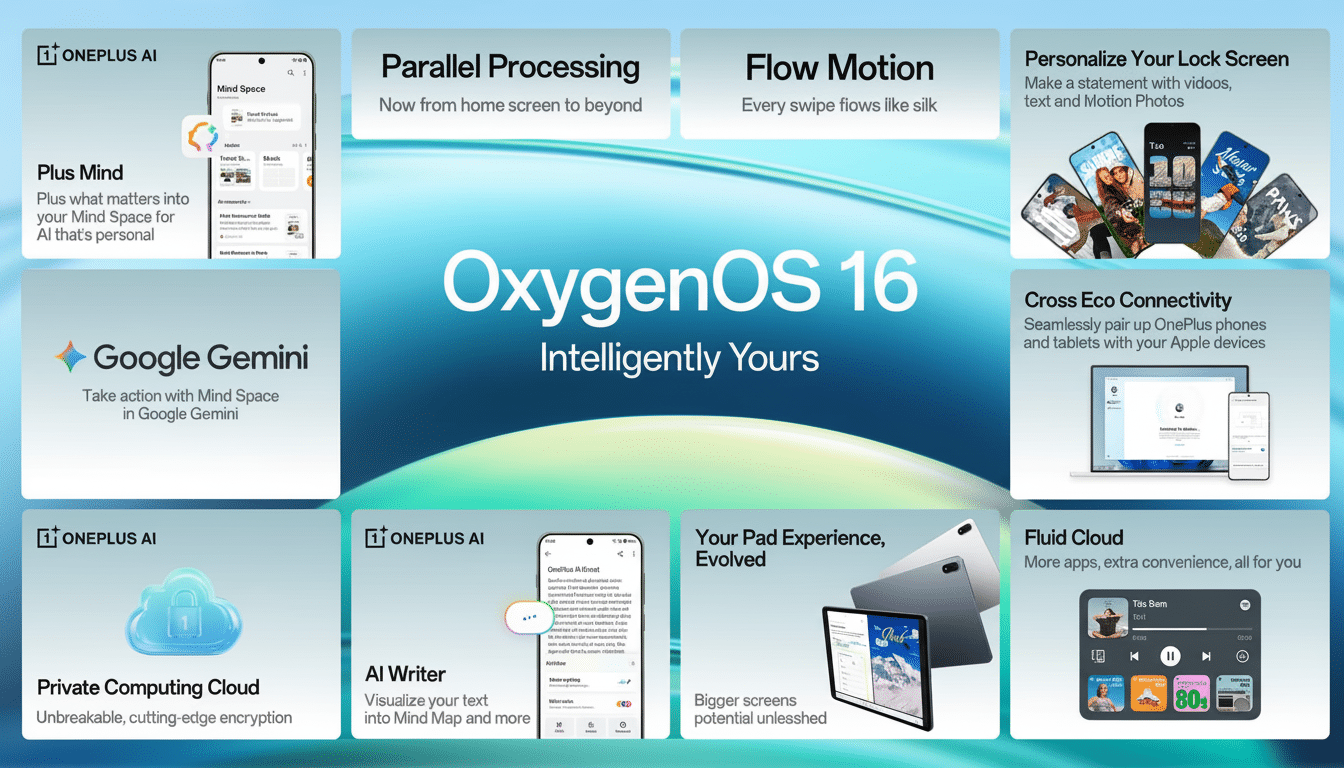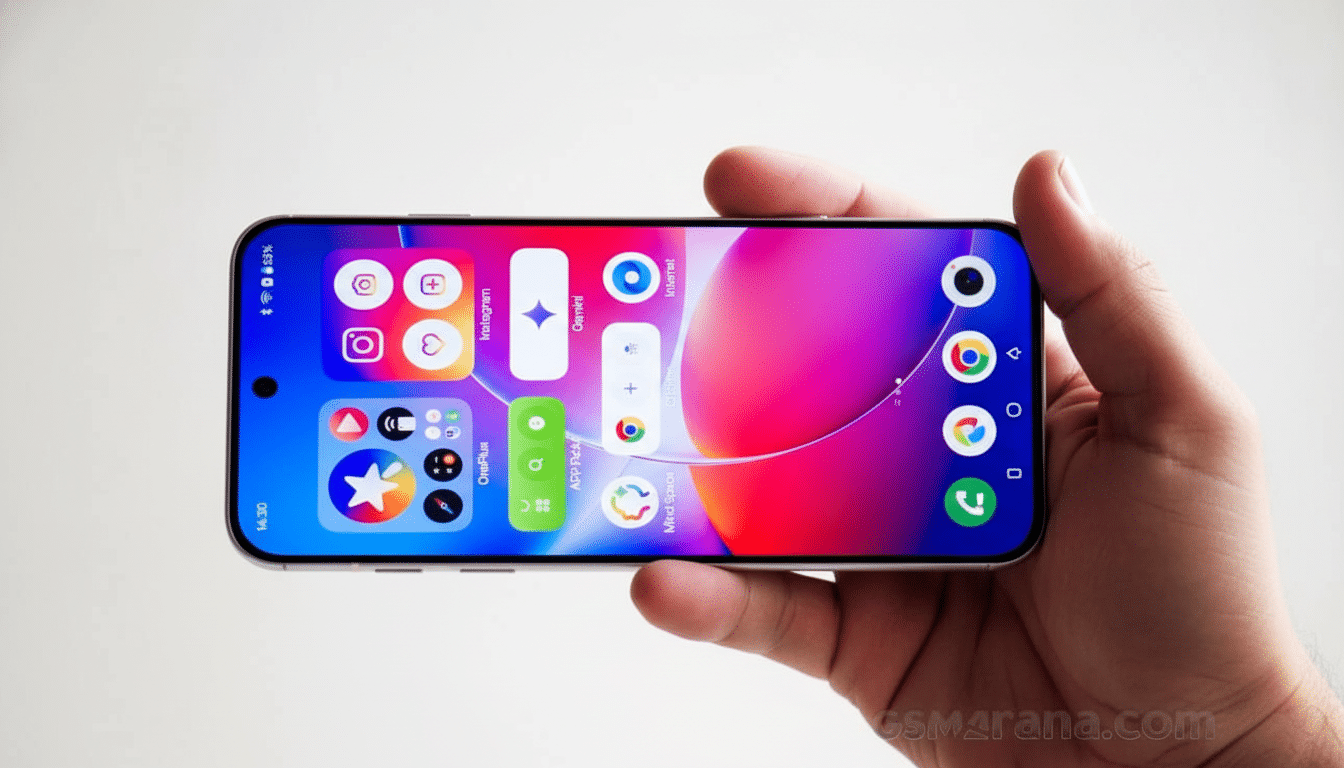Fans of premium OnePlus phones have seen the company’s Android 16-based OxygenOS 16 build for months, but at last there’s an end in sight: the brand announced today that it is pushing a version of the final software to its flagship phones this month, after long standing behind Pixel and early Samsung waves.
Its standout feature is even deeper Gemini integration, which leans on OnePlus’s Mind Space, indicating a more aggressive foray into smartphone productivity and AI-powered recall.

Though the company has not shared a full changelog, the direction is clear: OxygenOS 16 will combine Google’s latest platform features with OnePlus’s data organization tools using AI to surface and act on information that you’ve already stored in your phone.
What Is New in OxygenOS 16 For OnePlus Users
Gemini’s closer hook into Mind Space is the headline addition. OnePlus has promoted situations in which the assistant digs up notes, screenshots, articles, and lists that you have saved and pieces them together into “actions.” Think organizing research on travel before a trip or converting a folder of screenshots into a shopping checklist with links and price comparisons.
The practical win is recall. People often tend to forget what they saved and where. By indexing Mind Space, Gemini purports to lower friction between capturing information and working with that information. Anticipate natural-language prompts such as “draft a study plan from my camera screenshots” or “compare the laptops I saved last week,” with AI stringing together context rather than simply hunting through files.
From a privacy perspective, OnePlus usually provides toggles for cloud access and background analysis. Expect a hybrid: on-device processing for classification and speedy summaries, with voluntary cloud requests when it comes to heavier lifting. Google has promoted the importance of Gemini throughout Android, and handset makers are starting to do the same while keeping their custom controls.
Which OnePlus Phones to Expect First in the Rollout
The latest flagships are almost always the first to get rollouts. That implies the OnePlus 12 series will be first in line, followed by the OnePlus 11. High-end devices like the OnePlus Open may also be placed first by virtue of their premium positioning and continued support.
OnePlus has publicly committed to as many as several generations of Android operating system updates and up to five years of security patches for recent flagships. That stance implies support extends to the existing portfolio and will be available at different times based on region, carrier certification, and device SKU.
How the Rollout Is Expected to Work for Users
Count on a staged rollout like the over-the-air approach we saw earlier, probably starting small with some IMEIs and graduating to wider waves unless bugs of significance arise. This approach helps manufacturers catch device-specific issues before they cascade into systemic problems. Readers on open beta tracks are accustomed to seeing builds first, with stable channels following a quick soak period.
If you don’t see the update immediately, that’s intentional. OnePlus tends to throttle these rollouts, and carrier versions may add additional layers of certification. A manual visit to Settings, as long as you have enough free storage and battery power (you’d be amazed at how specific the requirements seem to be), typically nudges things along after your device has been whitelisted.

Why This Matters in the Current Android Update Race
Android updates now get graded on consistency and pace. Third-party studies from firms such as Counterpoint Research and IDC have noted how faster software updates can lead to greater user happiness and extended device lifecycles, especially among those budgeting a premium price for a long-haul experience.
OnePlus has made its name on speed, and keeping pace with the quick rhythms of competition from Google and Samsung is key to preserving that advantage. Platform-level, truly useful AI — transforming disjointed personal content into actionable items and plans you can follow — may be the key differentiator that allows OxygenOS 16 to grow out of its current role as a mere source of minimal cosmetic changes.
Useful Preparation Steps Before the Update Hits Devices
Back up all your phone data both locally and in the cloud, clean out duplicate screenshots in your gallery, and go over Mind Space folders so Gemini ends up with clean data to work with.
If you rely on sensitive notes, consider permission prompts as features are released and determine whether to stick with on-device-only processing or allow for cloud-assisted queries.
Once updated, test out some specific tasks that highlight the new AI layer:
- Ask Gemini to summarize your saved articles around a topic
- Generate a packing list based on your travel folder
- Compile warranty PDFs into an all-in-one reference
Early, tangible wins are the best indicator for whether OxygenOS 16 keeps that promise.
Bottom line: Android 16 is in the air for OnePlus flagships and, assuming it takes hold, Gemini combined with Mind Space has real potential to make everyday organization that much simpler.
If OnePlus nails the landing with a speedy, stable rollout, OxygenOS 16 will not be just another version number but a legitimate step forward.

